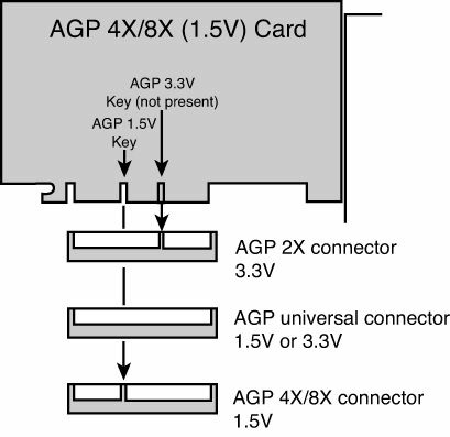Hardware Reference
In-Depth Information
This can often be caused by problems with the power line, such as an electric motor, an air
conditioner, a refrigerator, a microwave oven, and so on, causing interference. Try replacing the
power cord, plugging the monitor or the system into a different outlet, or moving it to a different
location entirely. I've also seen this problem caused by local radio transmitters such as a nearby
radio or television station or two-way radios being operated in the vicinity of the system. If the
monitor is a CRT and the image is bent and discolored, it could be due to the shadow mask being
magnetized. To demagnetize the mask, you can turn the monitor on and off repeatedly; this causes the
built-in degaussing coil around the perimeter of the tube to activate in an attempt to demagnetize the
shadow mask. Some CRTs include a degauss feature in their onscreen menus, which if available
would be preferred over turning the unit on and off. If degaussing seems to work partially but not
completely, you might need to obtain a professional degaussing coil from an electronics or TV
service shop to demagnetize the mask. Finally, if the problems persist, replace the monitor cable, try
a different (known-good) monitor, and finally replace the video card.
I purchased a video card, and it won't fit in the slot.
Most video cards are designed to conform to the AGP 4X, AGP 8X, or PCI Express x16
specification. It is all but impossible to install a PCI Express x16 card into a non-PCI Express x16
slot, but problems can arise with AGP cards when they're used with older AGP systems.
Both AGP 4X and AGP 8X are designed to run on only 1.5V.
Most older motherboards with AGP 2X slots are designed to accept only 3.3V cards. If you were to
plug a 1.5V card into a 3.3V slot, both the card and motherboard could be damaged. Special keys
have therefore been incorporated into the AGP specification to prevent such disasters. Typically, the
slots and cards are keyed such that 1.5V cards fit only in 1.5V sockets and 3.3V cards fit only in 3.3V
sockets. Additionally, universal sockets are available that accept either 1.5V or 3.3V cards. The
keying for the AGP cards and connectors is dictated by the AGP standard, as shown in
Figure 20.10
.
Figure 20.10. AGP 4X/8X (1.5V) card and how it relates to 3.3V, universal, and 1.5V AGP slots.


